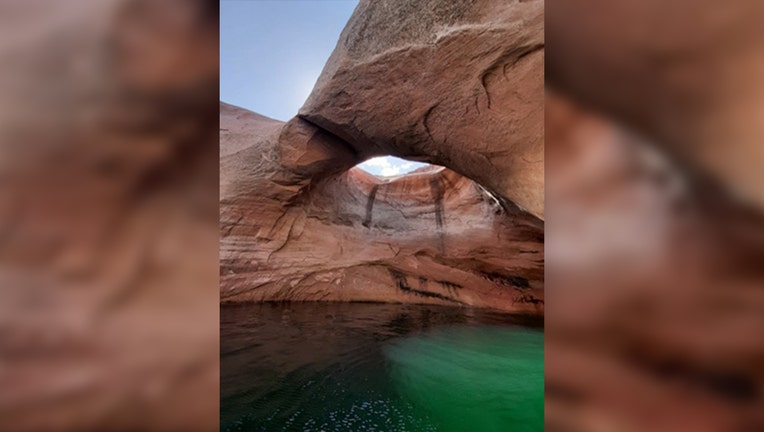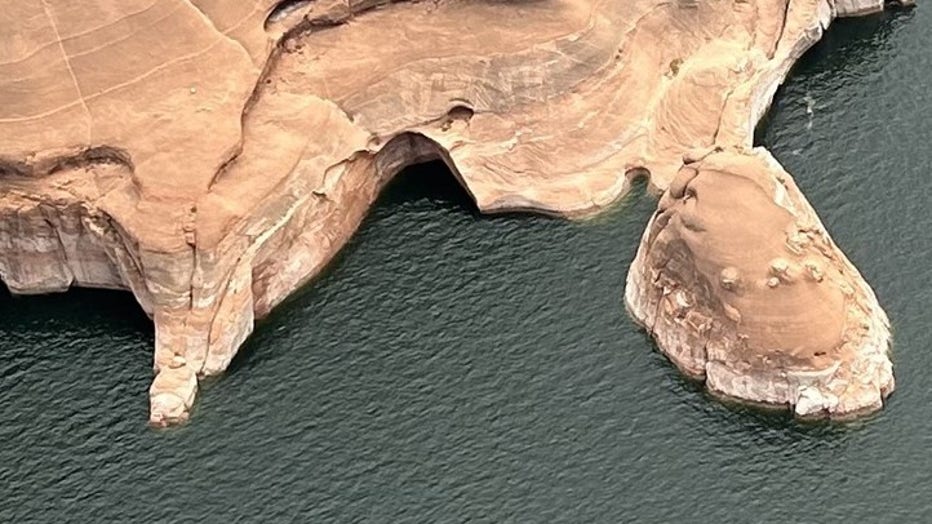'Double Arch' at Glen Canyon National Recreation Area has collapsed: National Park Service

The Double Arch at the Glen Canyon National Recreation Area, in a photo taken before the collapse. (Courtesy: National Park Service)
UTAH - Officials with the National Park Service say a frequently-visited geological feature at the Glen Canyon National Recreation Area in Utah has collapsed.
In a statement released on Aug. 9, NPS said the Double Arch, which is also known as the ‘Toilet Bowl,’ ‘Crescent Pool,’ and ‘Hole in the Roof,’ collapsed on Aug. 8. No injuries were reported.
"Double Arch was formed from 190-million-year-old Navajo sandstone originating in the late Triassic to early Jurassic periods. Since formation, this fine-grained sand feature has been subject to spalling and erosion from weather, wind, and rain," read a portion of the statement. "Changing water levels and erosion from wave action is suspected of contributing to the ultimate collapse of the arch."

The Double Arch at the Glen Canyon National Recreation Area, following its collapse. (Courtesy: National Park Service)
"This event serves as a reminder of our responsibility and need to protect the mineral resources surrounding Lake Powell. These features have a life span that can be influenced or damaged by manmade interventions," said Glen Canyon National Recreation Area Superintendent Michelle Kerns. "While we don’t know what caused this collapse, we will continue to maintain our resource protection efforts on Lake Powell for future generations to enjoy. Please enjoy our resources but leave no trace."
This story was reported on from Phoenix.

